The second day of our trip concentrated on Glacier National Park, located east of Revelstoke National Park in British Columbia.
Glacier National Park is one of seven national parks in British Columbia. Established in 1886, the park encompasses 1,349 km² (1,215 miles²) and includes a portion of the Selkirk Mountains.
We spent most of our time in the Rogers Pass area, a high mountain pass through the Selkirks. The pass includes the approaches used by the Canadian Pacific Railway and the Trans-Canada Highway. In the heart of Glacier National Park, Rogers Pass is a tourism destination since 1886 and a National Historic Site.
Mount Rogers, is a 3,169-metre (10,397 ft) massif located in Glacier National Park in the Selkirk Mountains of British Columbia, Canada. Mount Rogers is situated at the north end of the Hermit Range, and is the highest point of the range.
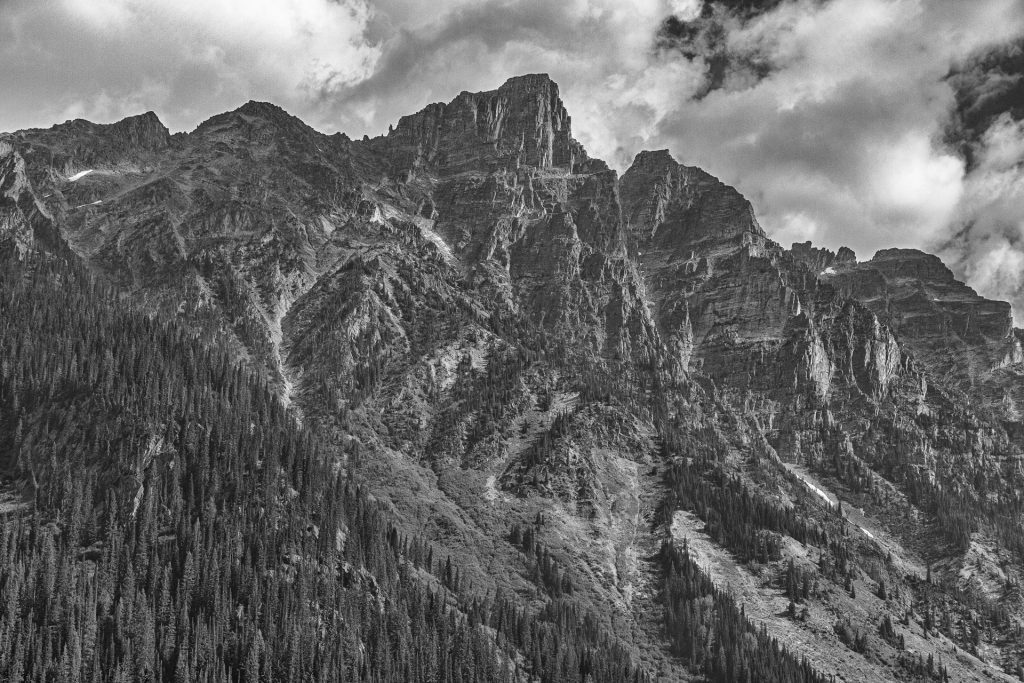
One of the highlights of our visit was the Bear Creek Falls. Curiously, the stream flowing over the falls is Connaught Creek. This Creek used to be called Bear Creek. They just didn’t bother to adjust the name of the waterfall when they changed the name of the creek. We hiked down to the falls via a beautiful trail through the forest. It’s a 1.1 km round trip, a good quality path, seemingly much steeper going back up than descending.
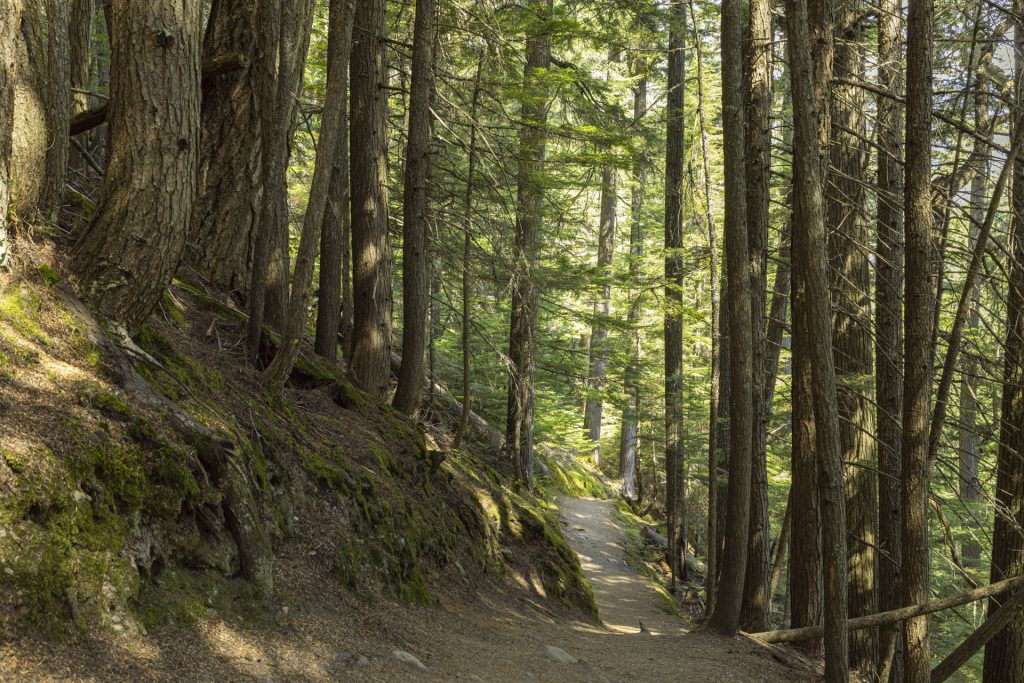
This is a close-up view of Connaught Creek, highlighting a rocky section of the stream. I’ve chosen a “longish” exposure (1/10th second) to create the streaming look of the water’s flow.
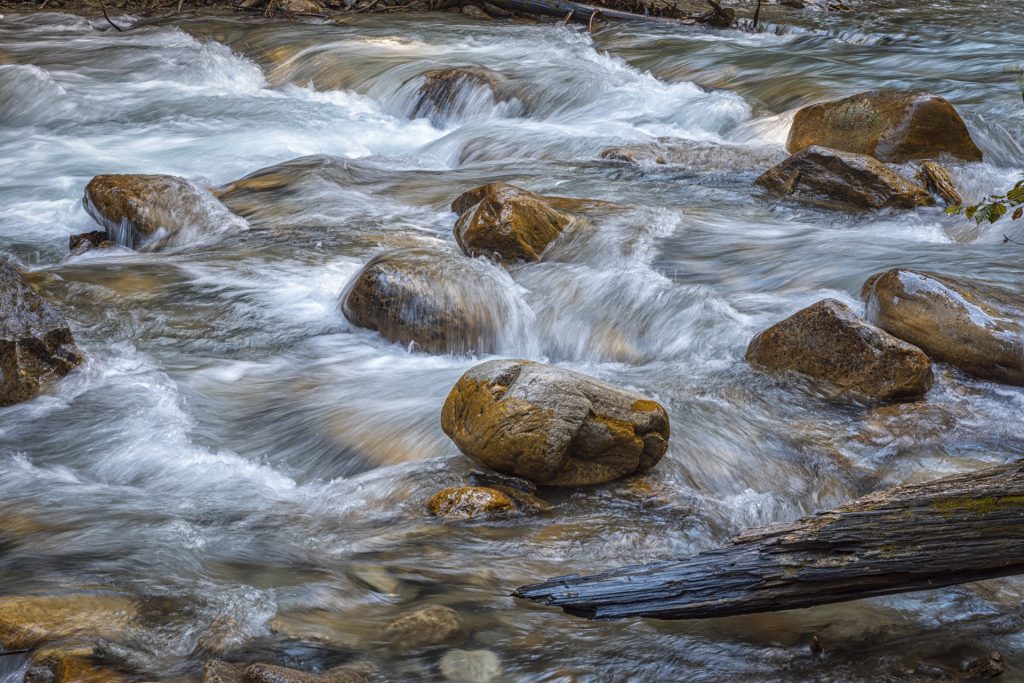
I thought this picture might be more striking as a black and white. Not sure. Your thoughts are welcome.
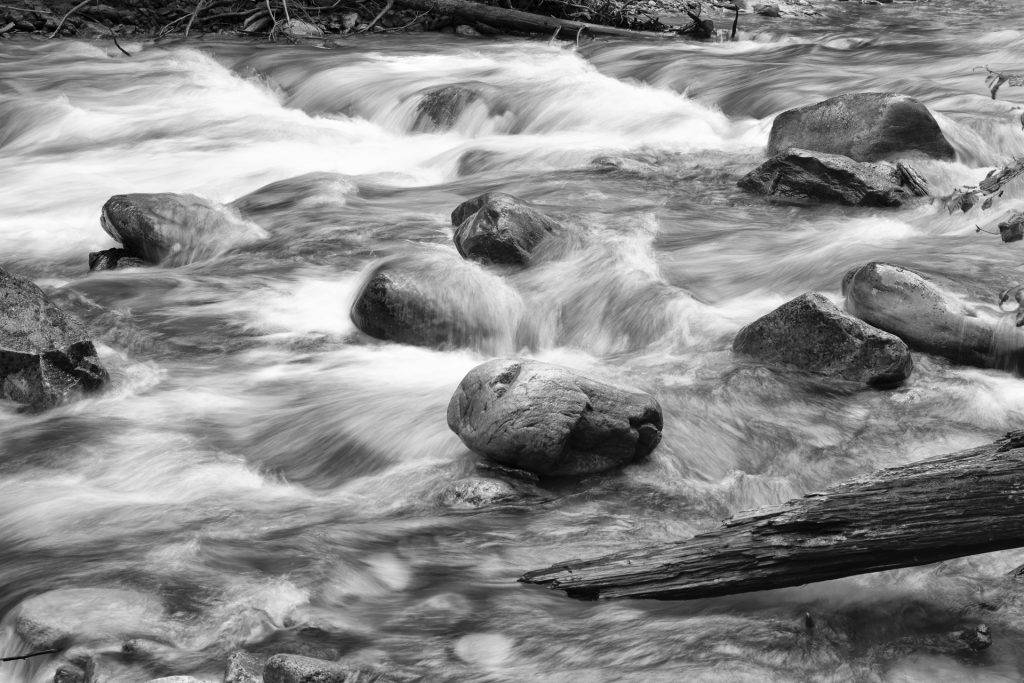
This next photograph, featuring the falls is among my favourites of the trip. We did get much closer but were unable to keep our lenses free of spray from the turbulence at the base of the falls.
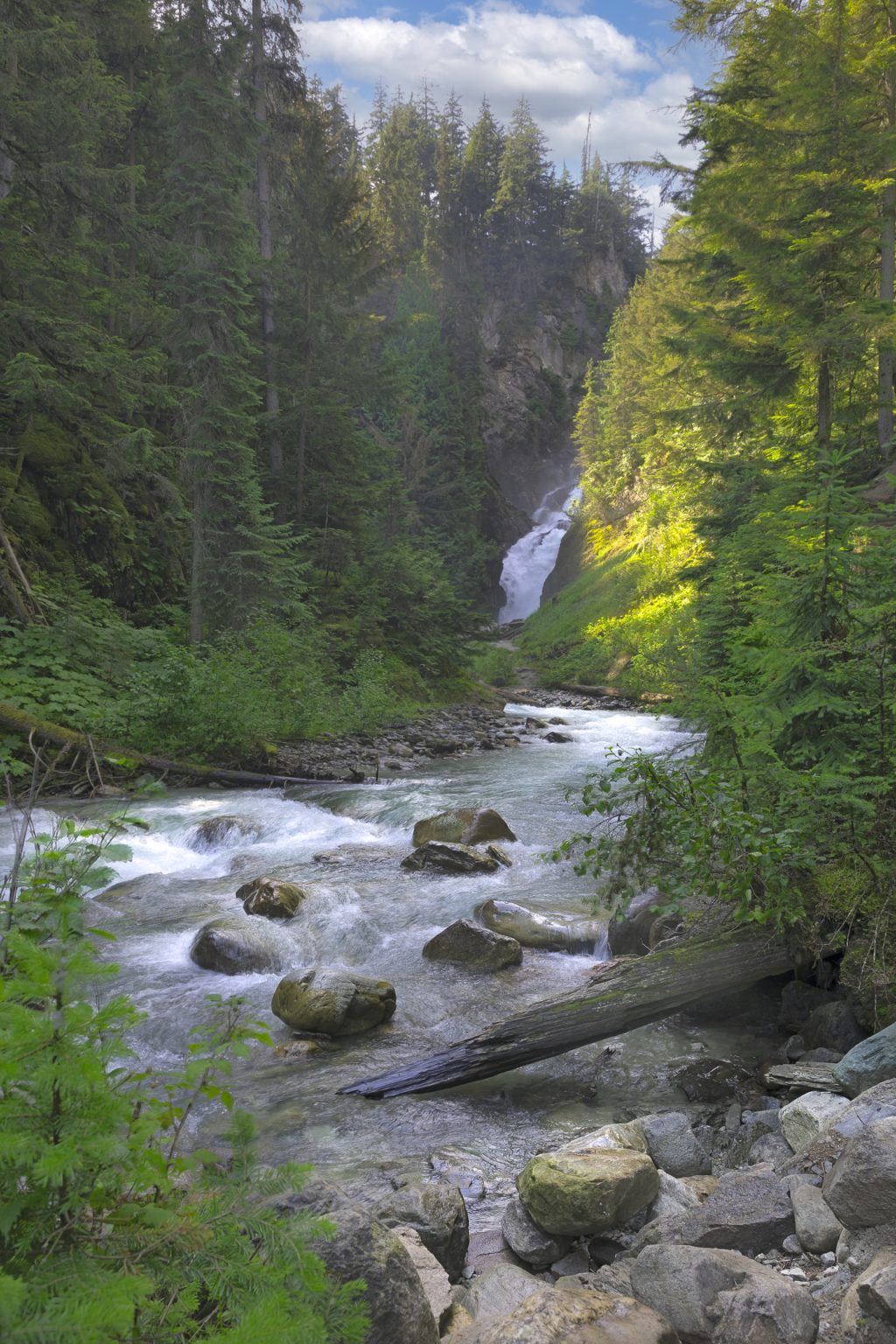
This following picture was taken close to the base of the falls. There was less mist in the air at this level and surprisingly, I did not accumulate water on this area of the lens, and consequently this area of the photograph. The original image is severely speckled with water droplets in the upper left area, so being unable to remove them satisfactorily, I cropped the original to get this final picture. My purpose in getting this close was to capture the thunderous power of the falls. This cropped image fails to accomplish that as well as the original would.
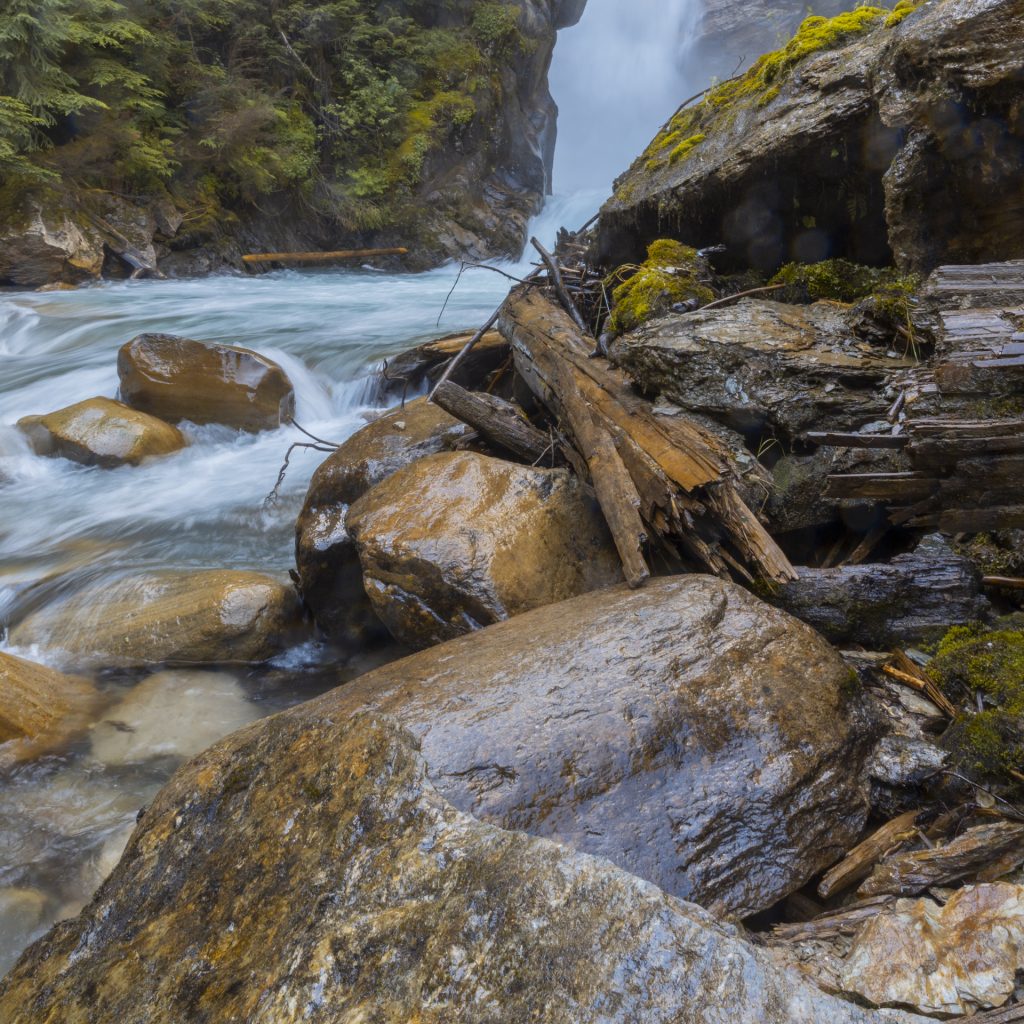
My final image for today is one of many avalanche sheds we passed through on our way home. It was taken through the front windshield, the only practical way to do it. ( I really didn’t want to stop traffic on the Trans-Canada Highway). Bob did a masterful job of driving to get me in a good position to take this picture.
(A snow shed or avalanche gallery is a type of rigid snow-supporting structure for avalanche control or to maintain passage in areas where snow removal becomes almost impossible. They can be made of steel, prestressed concrete frames, or timber. Imagine driving through one of these with an avalanche passing overhead. These sheds are numerous in this section of the Rogers Pass.)
I took this photograph for the artistic merit of the scene. Lighting in the sheds has been upgraded, better revealing the patterns inherent in the structural support. Combined with the patterns created by the row of lights on the left and the sunlight entering via the windows to the right, it’s a bonanza of patterns. (Photographers like patterns).
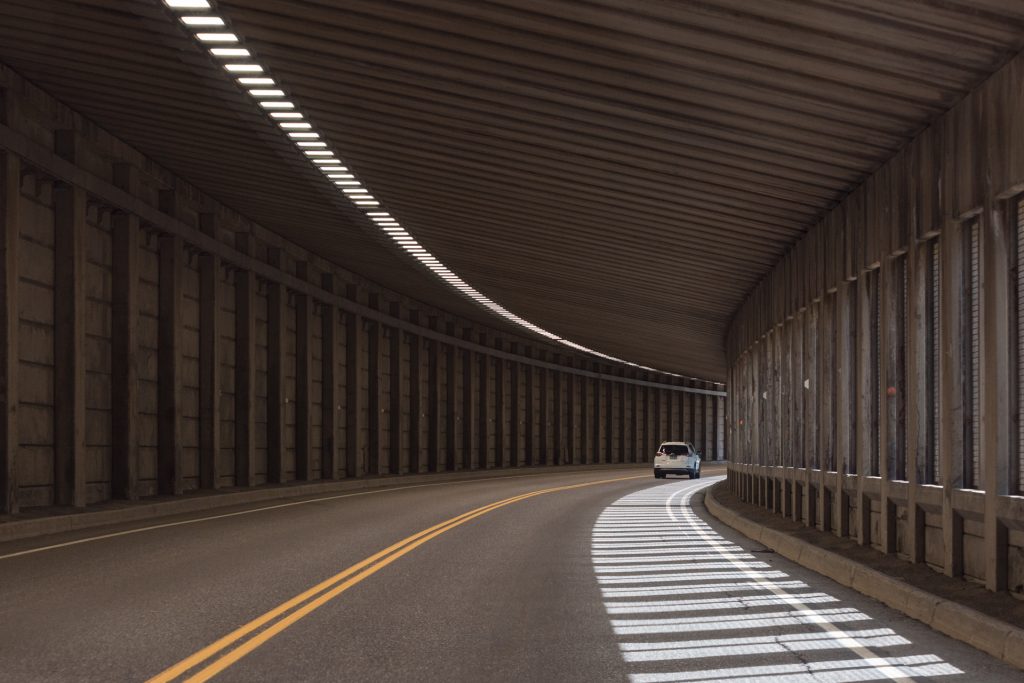
That completes my photographs from our recent trip to British Columbia. I hope you’ve enjoyed.
